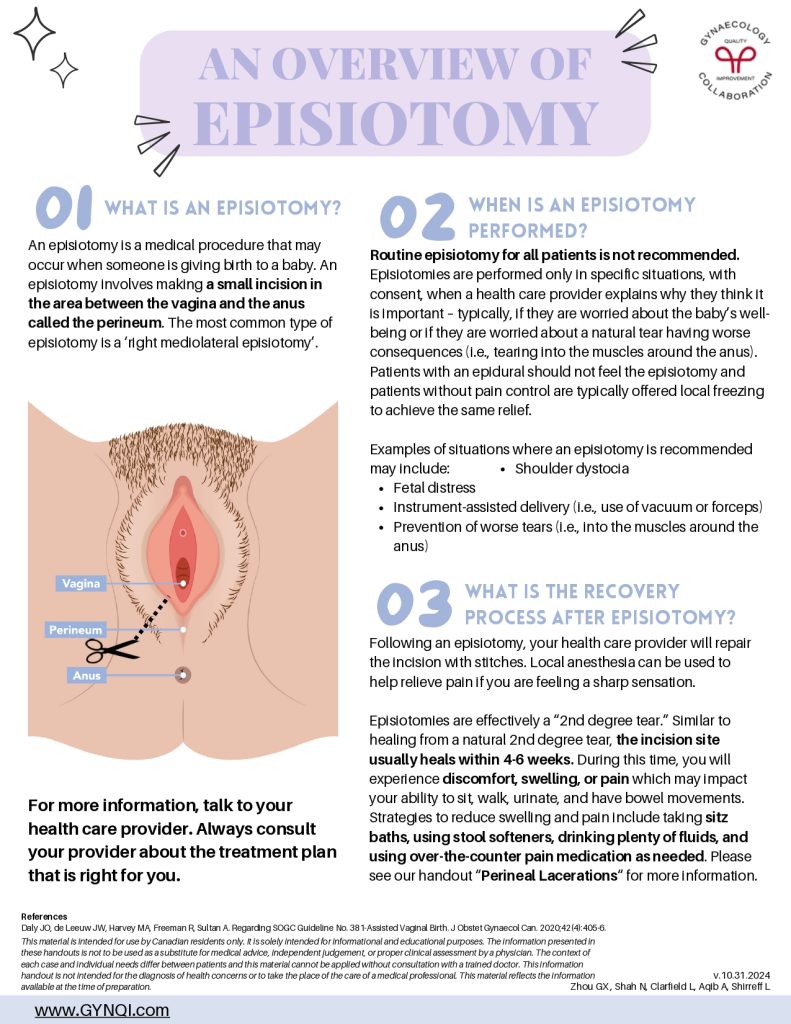
An Overview Of Episiotomy
01 What Is An Episiotomy?
An episiotomy is a medical procedure that may occur when someone is giving birth to a baby. An episiotomy involves making a small incision in the area between the vagina and the anus called the perineum. The most common type of episiotomy is a ‘right mediolateral episiotomy’.
02 When Is An Episiotomy Performed?
Routine episiotomy for all patients is not recommended. Episiotomies are performed only in specific situations, with consent, when a health care provider explains why they think it is important – typically, if they are worried about the baby’s well-being or if they are worried about a natural tear having worse consequences (i.e., tearing into the muscles around the anus). Patients with an epidural should not feel the episiotomy and patients without pain control are typically offered local freezing to achieve the same relief.
Examples of situations where an episiotomy is recommended may include:
- Fetal distress
- Shoulder dystocia
- Instrument-assisted delivery (i.e., use of vacuum or forceps)
- Prevention of worse tears (i.e., into the muscles around the anus)
03 What Is the Recovery Process After Episiotomy?
Following an episiotomy, your health care provider will repair the incision with stitches. Local anesthesia can be used to help relieve pain if you are feeling a sharp sensation.
Episiotomies are effectively a “2nd degree tear.” Similar to healing from a natural 2nd degree tear, the incision site usually heals within 4-6 weeks. During this time, you will experience discomfort, swelling, or pain which may impact your ability to sit, walk, urinate, and have bowel movements. Strategies to reduce swelling and pain include taking sitz baths, using stool softeners, drinking plenty of fluids, and using over-the-counter pain medication as needed. Please see our handout “Perineal Lacerations“ for more information.
For more information, talk to your health care provider. Always consult your provider about the treatment plan that is right for you.



